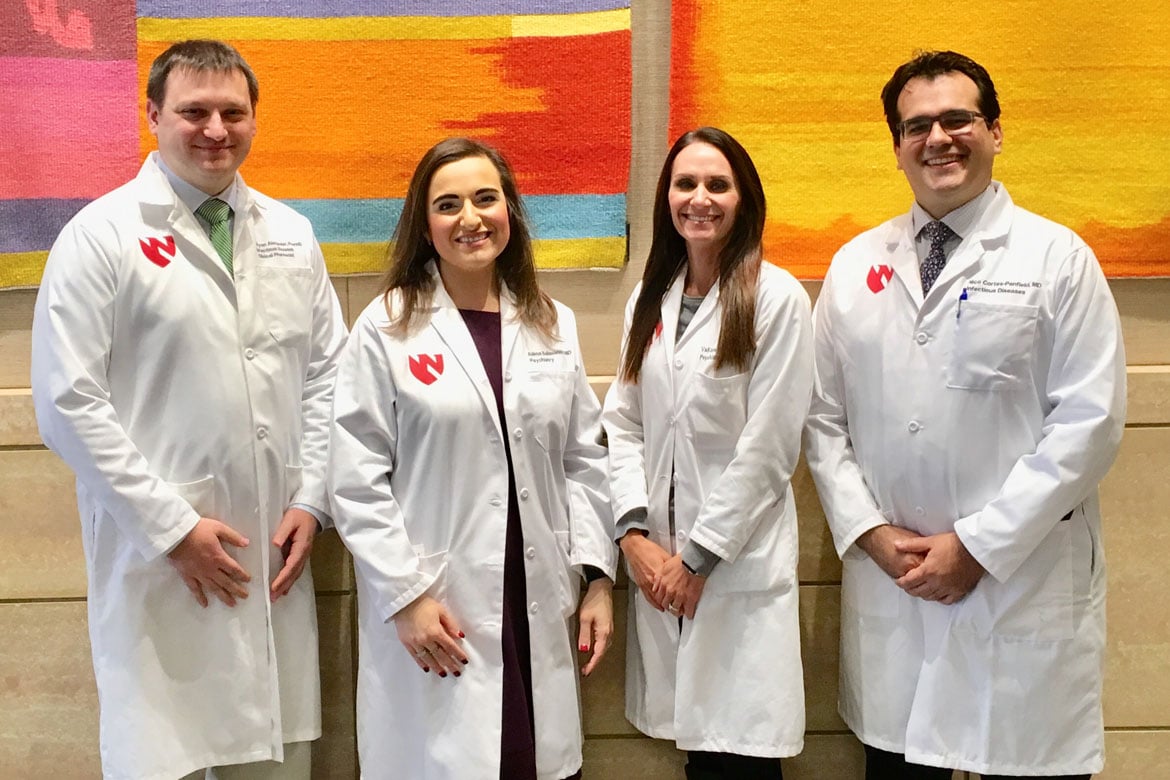When Alëna Balasanova, MD, started the addiction psychiatry consultation-liaison service at the University of Nebraska Medical Center with a colleague two years ago, even she didn’t realize how much it would become part of the culture of her hospital.
From developing protocols and processes for patients with substance-use disorders (SUDs) getting surgery to routine consults with her internal medicine and surgical colleagues, Dr. Balasanova says she’s most proud of the team-based culture she’s been able to help create.
“With the past year and COVID, while hospital occupancy generally went down, our census on the addiction consult service increased exponentially,” said Dr. Balasanova. “As alcohol and drug use have sharply risen, there’s been an even greater need to ensure evidence-based care across multiple settings.”
For medically and surgically hospitalized patients, there is now a multidisciplinary team consisting of the faculty psychiatrist, interns and residents in psychiatry, social work, medical students, health professions students, and addiction medicine and pain medicine fellows.
“We have developed a close relationship with the infectious diseases team to help educate and support OPAT [Outpatient Parenteral Antimicrobial Therapy] for patients who inject drugs [PWID],” said Dr. Balasanova. “There has historically been hesitancy to discharge PWID with PICC lines for IV antibiotics. We have worked together to help reduce risk and increase SUD treatment referrals. It’s win-win.”
Continuing treatment pre- and post-op
Dr. Balasanova also sees the creation of protocols and order sets in the system EMR for hospitalized patients with SUDs as one of the most promising and challenging efforts over the past two years.
“We were getting a lot of calls about how to handle pre-op patients on medications for opioid-use disorder [MOUD],” she said. “Working with our acute pain service, we have established a protocol so that patients aren’t forced to stop taking buprenorphine preoperatively and then post-surgery, they’re carefully monitored and continued on buprenorphine therapy to maintain treatment. It’s just good medical care.”
Despite the considerable effort already, Dr. Balasanova said the work is just beginning.
“We’re going to soon have education and training for every physician, nurse, pharmacist and other health care professionals in the hospital about management of opioid withdrawal” she said. “It’s been wonderful to have institutional leadership’s support as well as the support of all my colleagues throughout the hospital in undertaking this important project.”
Advocacy doesn’t end at the hospital
Working with the Nebraska Medical Association (NMA), Dr. Balasanova is also spearheading legislative efforts to remove prior authorization for MOUD. Nebraska is one of approximately 25 states that still allow health insurance companies to deny and delay MOUD despite its proven effectiveness to help patients remain in treatment, help maintain families and employment, and save lives.
“It’s one of those hurdles that health insurance companies say is there to improve patient safety, but you’ll never see ‘prior authorization protocol’ in any authoritative textbook, grand rounds presentation, or evidence-based research on improving care,” said Dr. Balasanova. “My patients want to get better and lead stable lives, and every prior authorization puts that in jeopardy.”
There is a bill in the Nebraska legislation this year, LB 413, that would put an end to most prior authorizations for MOUD. Already, there has been good progress to educate lawmakers and state officials about why it is necessary.
“Just like Dr. Balasanova has worked hard in the hospital to educate her colleagues, we do the same thing at the state legislature,” said Dexter Schrodt, NMA vice president for advocacy and regulation. “The prospects look good for LB 413, but we have work to do—talking about addiction and prior authorization is complicated, but we are committed to getting this bill done.”
The AMA believes that science, evidence and compassion must continue to guide patient care and policy change as the nation is facing a more dangerous and complicated illicit drug-overdose epidemic. Learn more at the AMA’s End the Epidemic website, where this physician profile was originally published.
The End the Epidemic website was recognized by the Academy of Interactive and Visual Arts. As part of that organization’s 27th Annual Communicator Awards, End the Epidemic was honored with an Award of Excellence in the Cause & Awareness website category.




